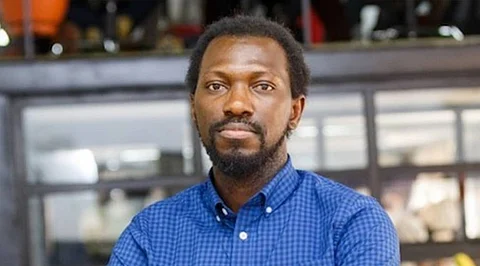

While much ink has been spilled covering how the COVID-19 pandemic affected mental health, remote work, student learning, and shopping trends, relatively little media attention has been focused on the industries that helped consumers through the worldwide health crisis.
To better understand how the COVID-19 reshaped financial technology, it helps to talk to someone who lived through it. Olugbenga “GB” Agboola is the founder and CEO of the e-payments platform Flutterwave. As one of the continent’s first unicorn startups (a business that’s valued at more than $1 billion), the company has been red-hot since its founding in 2016.
But there’s more to the Flutterwave story than the explosive growth that’s led it to process over 890 million individual transactions totaling over $34 billion while operating across 30 countries in North America, Europe, and Africa.
There’s also the matter of how it responded to the pandemic.
The pandemic shook up global commerce by stripping bare many of the assumptions companies had relied on for years. With less money to spend and fewer chances to move about, consumers changed the way they shopped, Agboola points out.
“It went two ways. Companies in the payment space that depended so much on physical exchanges really had challenges. So if your business was dependent on foot traffic, you had issues,” he says. “But if you had an e-commerce-based business, you thrived during and just after the COVID-19 lockdown. So it wasn't an easy period for any organization. But what kept us going is one of our core values, which is that we create and innovate.”
Sensing a chance to help a core group of users, Flutterwave pivoted from its five-year plan to lend a helping hand to affected businesses.
“Then the pandemic struck. The team came to me and said, “GB, let’s build a Shopify-like product but for SMBs and help them sell more, to help them keep the lights on [during the pandemic shutdowns].
“So we went from a perspective of pure impact and built the Flutterwave store, which quickly became very successful,” he says.
“We were able to onboard over 20,000 SMBs on that platform in a very short period. It was simple. We built in payment logistics and e-commerce in one. You can take a photo of what you’re selling, put it online, and sell it, and then someone can come and pick it up for you and do delivery.
“It went viral quickly. When we saw that, we decided to invest in SMBs as a sector. That said, we also believed in building distribution, so we also built a consumer app that’s like Cash App, with the goal of building remittances for Africans via that product.”
But that wasn’t all. Flutterwave also doubled down one of its core missions.
Agboola has been clear since Flutterwave’s launch that he wants it to play a key role in advancing the future of Africa. His company doesn’t exist solely to make money. It’s also about providing new opportunities to the next generation of Africans.
So, as the pandemic threatened to upend much of the work that had already been done to modernize African commerce, Flutterwave sprang to action.
“We launched this campaign, Keeping the Lights On, and what it means is that campaign was our mindset in tackling that whole new situation that faced us. We wanted to keep the lights on for all the businesses that have been impacted. And we used that principle across all our business categories, across small businesses, across middle-scale and large businesses,” Agboola says. “For small businesses, we created solutions for them to get online and sell, which is tough. Middle-scale businesses, we had account managers and relationship managers asking them, ‘Hey, what do we do for you to develop in this way, to go in this direction that could make you more money, could solve more problems for your customers?’ And that is also the same case for enterprise merchants. We built or offered to build work products that were going to be useful to these people.”
Much of the fintech industry followed Flutterwave’s example. Companies expanded their services, built new apps to cater to markets outside their target demographics, and pushed the envelope on what could be done to transition consumer spending from the physical to the digital sphere.
The push to help people led to breakthroughs, both in terms of technology as well as in terms of how fintech platforms thought about their role in society. Financial institutions often make business decisions by looking first at the bottom line.
The pandemic changed that idea, giving fintech platforms a chance to leap before they looked. And the results were clear.
“I would say we combined two of our core values to make it happen, which is we are customer-focused and then we create and innovate. So we brought these things together and we decided to make magic for people,” he says. “And at the end of the day, post-COVID we had some of our best financial years. It was some of our best years in respect to transaction value and transaction volume. And, three years after COVID, everything has normalized. So the gains from e-commerce are there; the gains from the other folks or that do physical businesses have already started and restarted and the market has normalized a bit.”
